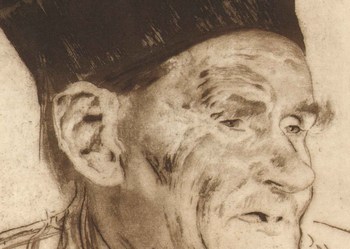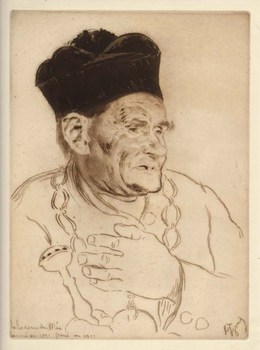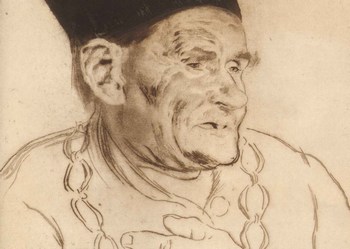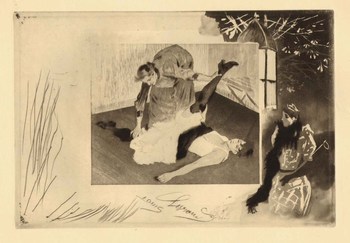
BRISEMENT A TERRE - 1892
BREAK ON THE GROUND
Arwas.62 ( I / III )
![]()
Etching with aqua-tint
From 'Cours de danse' A series of 11 etchings
published by Dentu in Paris in 1892.
This is a first state, before the signature of Legrand upper left in
the middle scene in the second state and before the elimination of
the Remarque as in the third state.
This is a rare state as only a few proofs where made from the two
first states...
18 by 27 cm on plate border.
48 by 31 cm for the sheet.
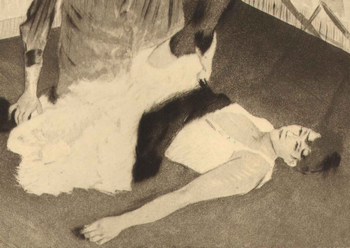
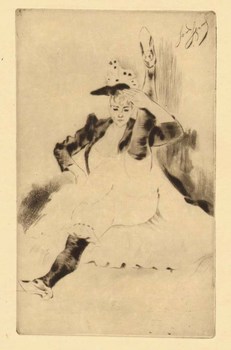
LE
SALUT MILITAIRE
- 1892
THE MILITARY SALUTE
Arwas.72 ( I-II / II )
Etching with dry-point
Related to 'Cours de danse' A series of 11 etchings
published by Dentu in Paris in 1892.
This one was never part of the above series but was published after
the publication by Dendu.
This is a rare etching.
It does not have the Remarque but it is unclear to me if this is a
state before the Remarque or after it was wiped off.
23,50 by 14,20 cm on plate border.
42,50 by 28,50 cm for the sheet.
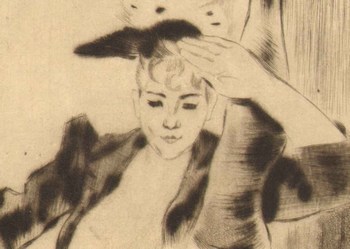
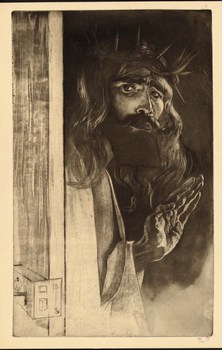
LE
CHRIST
- 2 May 1895
CHRIST
Arwas.98 ( IV / IV)
Etching with aqua-tint and dry-point
This is a self-portrait by the artist
On of 100 impressions on
Japon
Numbered 87/100
With the red publishers stamp of Gustave Jean Baptiste Xavier Pellet
(1859-1919) the famous Legrand publisher.
58,30 by 35,80 cm on plate border.
62 by 42 cm for the sheet.
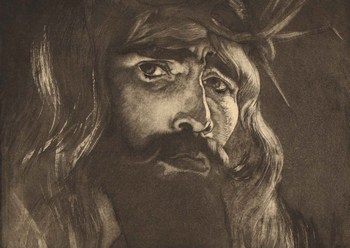
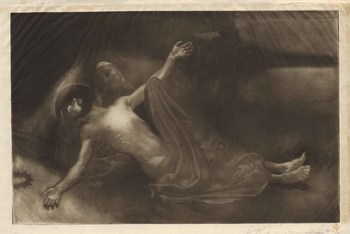
LE
CALVAIRE- ( Ca.1903 )
CALVARY
Arwas.203 ( IV / IV )
Etching with
aqua-tint
On of 40 impressions on thin Japon
Numbered 2 / 40
With the red studio stamp of Louis Legrand .
Pencil signed in full: Louis Legrand
Pencil titled 'calvaire avant l'avierge'
35,50 by 55,20 cm on plate border.
42,50 by 64 cm for the sheet
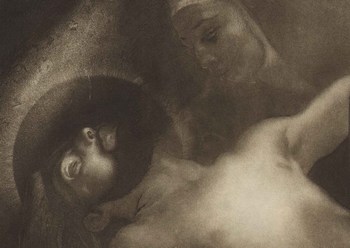
LE BEDEAU DU MEE - 5 dec 1911
THE BEADLE OF THE MEE
Arwas.433 ( IV / IV )
Vernis
Mou
A minor official of a parish, at Mee
A
final state with title, date and Signature.
On of 70 impressions on velin.
Watermark in the laid paper:
A Swann and the words 'Pellet et Legrand'
36,30 by 26,80 cm on plate border.
44,50 by 31,50 cm for the sheet.
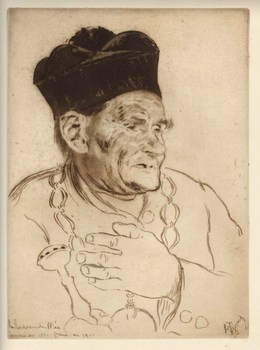
LE BEDEAU DU MEE - 5 dec 1911
THE BEADLE OF THE MEE
Arwas.433 ( IV / IV )
Vernis
Mou
A minor official of a parish, at Mee
A
final state with title, date and Signature.
On of 70 impressions on velum.
Watermark in the laid paper:
A Swann and the words 'Pellet et Legrand'
36,30 by 26,80 cm on plate border.
44,50 by 31,50 cm for the sheet.
